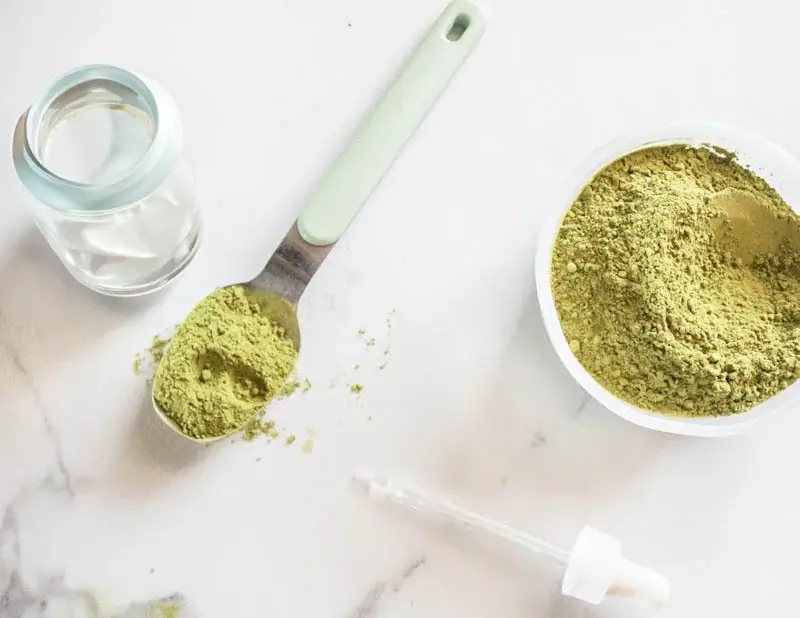It’s shocking… more than 1 billion people worldwide are estimated to have low vitamin D levels?
Vitamin D plays a vital role in your mood, energy, immune strength, and bone health. Yet long work hours indoors, sunscreen use, and colder climates make deficiency increasingly common.
The good news? With a few intentional choices (like safe sun exposure, smart supplementation, and nourishing foods) you can restore healthy levels naturally and enjoy the benefits of this “sunshine vitamin” year-round.
Let’s take a closer look at how much sunlight you really need, the warning signs of deficiency, and how to balance God’s natural design for your body with modern health wisdom.
Table of Contents
How Much Sun Do You Really Need?
A little sunshine each day can do wonders for your mood and overall well-being, but how much is enough?
Experts agree that 10–30 minutes of direct sunlight on bare skin (arms, legs, and face) is typically adequate for most people to produce vitamin D. Those with darker skin may need more time, while individuals living in northern regions or during winter months often need supplements, since sunlight alone may not be sufficient.
Important note: it is possible to produce vitamin D in cloudy conditions because UVB rays penetrate clouds, though productivity is significantly lower, and more time is needed outdoors to achieve the same result as on sunny days.
Finding the Right Balance
Sun exposure requirements vary by skin tone, latitude, and season. Outside of summer, the body’s vitamin D production drops sharply, making supplementation a smart choice for many adults. Sunscreen and protective clothing—though essential for reducing skin cancer risk—also limit vitamin D synthesis, so striking a balance between brief unprotected exposure and sun safety is key.
Other Benefits of Sunshine
Beyond vitamin D, sunlight helps regulate your circadian rhythm, supporting better sleep and boosting mood through serotonin production. Morning sun, in particular, can help keep your internal clock aligned and energy levels stable throughout the day.
The Bottom Line
A small dose of daily sunshine can support your health naturally, but when sunlight is limited, vitamin D-rich foods and supplements fill the gap safely. More sun isn’t necessarily better; too much exposure can increase your risk of skin damage. Aim for moderation, not excess, and enjoy the many benefits of God’s natural light responsibly.
Common Causes of Vitamin D Deficiency
Relatively unheard of 100 years ago when people regularly spent time outdoors (regardless of the temperature or weather conditions!) vitamin D deficiency is quickly becoming an epidemic. According to the National Institute of Health (NIH), hypovitaminosis D (low vitamin D levels), including signs of vitamin D deficiency, are usually a result of:
- Lack of sunlight exposure – Your body makes vitamin D when your skin is exposed to direct sunlight.
- Lack of dietary vitamin D – Mostly affecting vegans, vitamin D is naturally rich in foods like grass-fed dairy and beef as well as wild-caught fish.
- Kidney diseases – Your kidneys convert 25-hydroxy vitamin D (25-OHD) to its “active form” in the kidneys, which basically means that it can be used by the body for certain functions like absorbing calcium in the GI tract.
- Poor food absorption – GI disorders like celiac disease, Crohn’s disease, cystic fibrosis, and others can prevent proper vitamin D assimilation.
- Use of certain medicines – Phenytoin, phenobarbital, rifampin, and other barbiturates are the main culprits of stealing your body’s ability to convert 25-OHD to active vitamin D.
Also, because of the high content of melanin in their skin, hypovitaminosis D is also commonly seen in African-American children (especially during the winter).
Warning Signs of Vitamin D Deficiency
Many people with hypovitaminosis D experience bone and joint pain in addition to muscle weakness, yet the symptoms can be very subtle. Nonetheless, low levels have been associated with a wide range of health conditions including:
- Cancer
- Chronic fatigue
- Cognitive impairment
- Hair loss
- Hypocalcemia (low blood calcium levels)
- Hypophosphatemia (low blood phosphate levels)
- Hypertension (high blood pressure)
- Rickets (bone softening in children)
- Osteomalacia (bone softening in adults)
- Severe asthma
- Weight gain
Additionally, “subclinical” vitamin D deficiency, defined as a lower-than-normal vitamin D levels without visible signs or symptoms, is also relatively common. To say that vitamin D has been “thoroughly evaluated” is an understatement. What causes vitamin D deficiency? More than 60,000 studies (1) have referenced this critical nutrient in scientific journals! When I was reviewing the literature, I found that the most recent research focused on the following key health concerns:
- Cardiovascular Disease (CVD) – Being the #1 cause of death worldwide, it may seem unbelievable that regular sun exposure can help prevent a heart attack, but it can! Low vitamin D has been associated with CVD because of its effects on oxidative stress, lipid metabolism, and the renin-angiotensin-aldosterone system. Moreover, an interesting study published this past year in the highly regarded journal Circulation, highlighted vitamin D’s anti-inflammatory and vascular regenerative properties. Truth is, science is just literally tapping into this vitamin’s heart-healing power and it’s a simple lifestyle change that can have profound heart health impact. Only time will tell how far-reaching it really is!
- Pain and Quality of Life – Oftentimes going hand-in-hand, enjoying a high level of quality of life while suffering from a pain condition is extremely challenging. Thankfully, it looks like vitamin D can help. Rheumatology International just published a study confirming that hypovitaminosis D is directly related to higher pain intensity, which can lead to lower quality of life scores in patients with chronic widespread pain. On the flip side, normal or elevated vitamin D levels can help mitigate pain, which will enhance quality of life!
- Prostate Cancer – According to an article published this past August in the journal, Cancer Epidemiology Biomarkers & Prevention, “Plasma 25-OHD levels were associated with a linear decrease in prostate cancer risk for high-grade cancers in African American men.” In other words, as vitamin D levels went up, the risk for prostate cancer went down and vice versa.
In an effort to dig a little deeper, researchers from the Fred Hutchinson Cancer Research Center in Seattle, set out to determine exactly which type of prostate cancer is affected by low vitamin D levels, and uncovered that Gleason 8-10 prostate cancers responded most dramatically. The Gleason System is the most common prostate grading system used today, and the fact that these types of cells are susceptible should encourage most men because Gleason 8-10 are the “poorly differentiated” or “undifferentiated” cells that generally require more intensive treatments. In other words, these are the deadly cancers.
- Juvenile idiopathic arthritis (JIA) – Low vitamin D levels has long been seen in patients with rheumatoid arthritis, so it shouldn’t surprise us to learn that kids with JIA are affected as well. A team of Italian researchers recently evaluated 152 patients with JIA and discovered that these children had “significantly reduced” 25-OHD levels compared to the control group. In addition, those patients with “active” juvenile idiopathic arthritis (and/or frequent relapses) were measured with the lowest levels compared to the children with no active JIA or infrequent flare-ups. This last point is critical because it suggests that regular vitamin D supplementation and sunbathing can, at the very least, make rheumatoid arthritis less debilitating for people.
Vitamin D Recommendations & Supplements
First, we need to answer whether or not vitamin D supplements really necessary…
While vitamins can help correct deficiencies, research shows they offer little benefit to people who already eat a balanced diet. Most vitamin D supplements are made from lanolin, a natural compound found in sheep’s wool that’s converted through UV light into the same form of vitamin D3 your body makes from sunlight.
Natural vs. Synthetic Vitamin D
Natural and synthetic forms are nearly identical in structure and function. However, natural sources may be absorbed slightly better because they come with cofactors—nutrients that enhance vitamin use. Synthetic supplements are still effective, just sometimes less efficiently processed by the body.
When Supplements Matter Most
Routine supplementation isn’t needed for everyone. The greatest benefits are seen in people who are deficient, pregnant, or have absorption issues due to medical conditions. For most healthy adults, supplements can’t replace a nutrient-rich diet or regular, safe sun exposure.
In short, vitamin D supplements are a useful backup plan, but God designed our bodies to thrive best when we get this “sunshine vitamin” the natural way: through light, whole foods, and time outdoors.
D3 + K2
The key to buying the right vitamin D supplement is to make sure it’s manufactured in a form that your body can absorb and that it’s blended with vitamin K2. When vitamin D3 and vitamin K2 are mixed together, a synergy is created and the health benefits of both vitamins are dramatically enhanced. Research has actually suggested that consuming vitamin D3 increases your body’s demand for vitamin K – so it’s important to take these two vitamins together. (2)
Also, when it comes to calcium metabolism, vitamins D and K work together: vitamin D helps get calcium into your blood and vitamin K helps get it into your bones! There are many forms of vitamin K2 (MK-4, MK-7, MK-8, and MK-9), and it’s important to remember that all of them are not created equal. MK-7 is by far the most bioactive, absorbable, and effective form. It also has a significantly longer half-life, which allows much more time for it to be absorbed and work its healing power.
Note on Bone Health & Steroids
It is well-known that vitamin D supplementation can help prevent osteoporosis, rickets, osteomalacia, cardiovascular disease and various myopathies. The National Osteoporosis Foundation (NOF) currently recommends that:
- Adults 50 years or older should supplement with 400-800 IU of vitamin D.
- Adults 50 years or younger should supplement with 800-1000 IU of vitamin D.
For patients taking chronic steroids, the American College of Rheumatology recommends 400 to 800 IU of vitamin D to prevent osteoporosis. What causes vitamin D deficiency? It seems that the NOF’s recommendations are actually quite low. Studies have shown that the best ways to naturally optimize vitamin D levels are to get significantly more IU’s.
In summary, vitamins made from sheep’s wool (lanolin) do work for correcting deficiencies; however, for most adults with balanced diets, regular supplementation offers limited extra benefits and natural forms tend to be marginally better for absorption. The best thing is to spend more time outdoors (even if it’s cloudy) and you’ll reap the mental healthy benefits as well!
- http://www.ncbi.nlm.nih.gov/pubmed/?term=vitamin+d
- https://www.westonaprice.org/health-topics/abcs-of-nutrition/on-the-trail-of-the-elusive-x-factor-a-sixty-two-year-old-mystery-finally-solved/
- Schwartz GG, et al. Vitamin d in blood and risk of prostate cancer: lessons from the selenium and vitamin e cancer prevention trial and the prostate cancer prevention trial. Cancer Epidemiol Biomarkers Prev. 2014 Aug;23(8):1447-9. doi
- Stagi S, et al. Determinants of Vitamin D Levels in Children, Adolescents, and Young Adults with Juvenile Idiopathic Arthritis. J Rheumatol. 2014 Aug 1.
- Schenk JM, et al. Serum 25-hydroxyvitamin d concentrations and risk of prostate cancer: results from the prostate cancer prevention trial. Cancer Epidemiol Biomarkers Prev. 2014 Aug;23(8):1484-93.
- Kuru P, et al. Hypovitaminosis D in widespread pain: its effect on pain perception, quality of life and nerve conduction studies. Rheumatol Int. 2014 Aug 2. [Epub ahead of print].
- Wong MS, et al. Vitamin D Promotes Vascular Regeneration. 2014 Jul 11. pii: CIRCULATIONAHA.114.010650. [Epub ahead of print].










